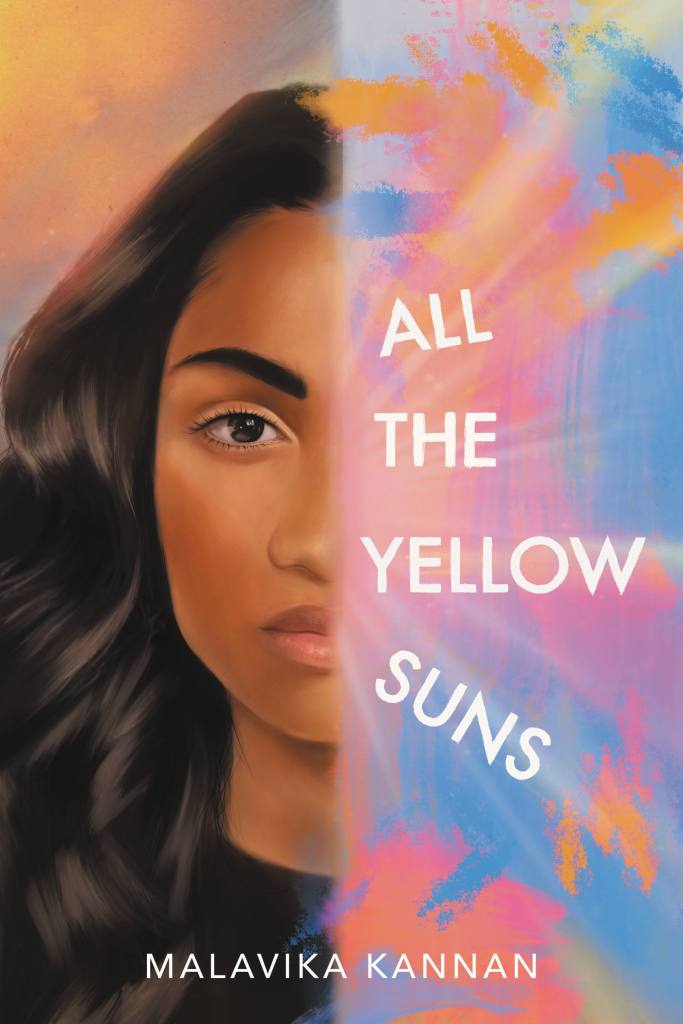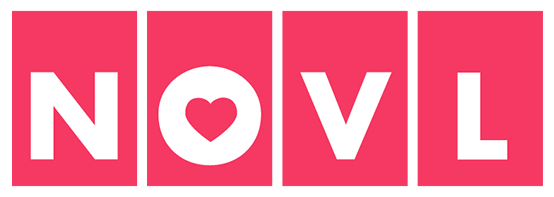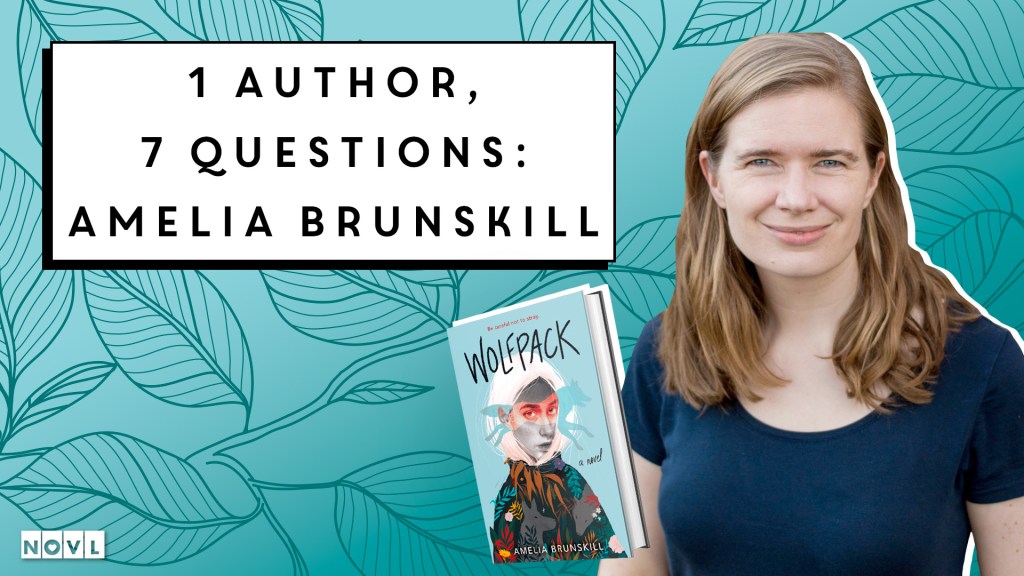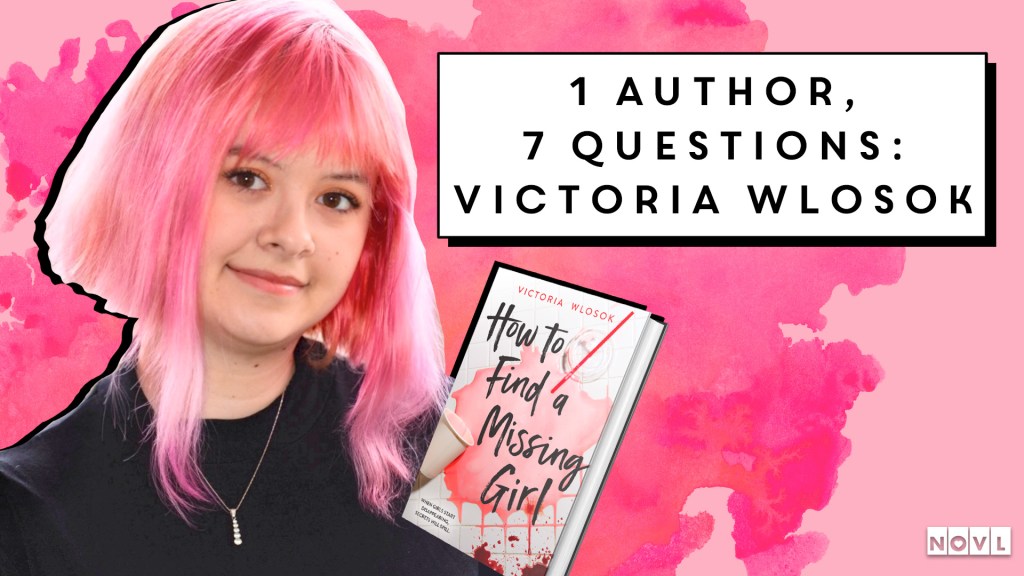1 Author, 7 Questions: Malavika Kannan
All the Yellow Suns is a story full of difficult truths and complicated relationships and learning to find your voice. It’s the story of sixteen-year-old Maya Krishnan who begins falling for Juneau Zale, a heartbreaker whose exploits are the stuff of rumor and legend and who doesn’t just rock the boat – she’ll capsize it. When Juneau invites Maya to join a secret society of artists and vandals looking to fight for justice at their school, Maya falls into the world of guerilla art and in love with the mysterious Juneau. But soon their relationship grows painful and twisted and the rest of Maya’s world threatens to topple. We sat down with the author, Malavika Kannan, to discuss her newest novel and writing style – and we might even get a sneak peek at what she’s working on next!
What was your initial inspiration for All the Yellow Suns?
I had the idea for All the Yellow Suns in high school. I had just had my first lesbian crush and heartbreak, and not unlike Taylor Swift, my first instinct was to process this into my art. As I entered college, it also became a way to honor and reflect on my coming-of-age process as an organizer and queer Indian-American woman.
Can you describe your writing process? Are you more of a pre-plotter of do you let the plot develop as you write?
I’m definitely a plotter. I was watching a lot of TV when writing ATYS so there’s a definite three-act and episodic structure to the novel, even as it builds up to its climax. ATYS also has a large cast of characters that I felt very invested in, so it was important that no thread or plotline was neglected. I had diagrams on diagrams made of little notecards. My bedroom wall looked like that of someone hunting down a serial killer. At one point I actually had a spreadsheet keeping track of where every character was at a given point in the story.
Maya’s relationship with her mother is so fascinating to witness because while it’s filled with a lot of love, it’s also very fraught – even before Maya’s father comes back into the picture. What was it like forging their relationship?
As someone who also has had a very fraught relationship with my mother due to my sexuality, I felt like I wrote that relationship from the heart. As the author, hovering above the actual heartbreak of living through the fictional conflict, I felt a responsibility to both parties – the immigrant daughter and immigrant mother – to portray them fairly and humanely. It was important to me that Maya’s mother not come across as a villain.
I love the way you build mystique around Juneau Zale, Maya’s intoxicating love interest! She’s such a fascinating character! What inspired her? What were some of the more difficult parts of developing her character? And what was it like building up Juneau and Maya’s rocky romance?
In middle and high school I read a lot of John Green’s novels, which tended to center around this dreamy, unattainable, often blonde girl who rocks the nerdy male protagonist’s world and ultimately teaches him all about love. That trope has been (rightfully) since torn apart and identified as the ‘manic pixie dream girl’ trope. I wanted to reinvigorate that trope through an entirely different perspective – that of a shy queer girl of color, who is looking to white girls as an example of how to own her sexuality, while also grappling with the fact that society will never treat her the same. ATYS’s own manic pixie dream girl, Juneau, gets pined over, romanticized, but also humanized and even a little humbled by Maya throughout the novel. I hope ATYS complicates these romantic tropes by queering the gaze and acknowledging the mingled admiration and jealousy of relationships with white women.
There are so many layers to this book, and they all culminate in that climax that, frankly, had my jaw on the floor! Did you always know where the book was heading? Did you always plan for this ending?
I always knew that the book needed to end on the tone that it did. I also knew it had to end with a bang. In early drafts of this novel, things got really crazy – I once envisioned Maya and Juneau torching down the school, and maybe or maybe not accidentally burning someone with it. I had to cut that for pragmatic reasons. Also, when I was very early in the imaginative process – maybe I was still sixteen – I had the silly idea that Juneau needed to die tragically and mysteriously at the end. I think that was a pretty popular trope in YA fiction at the time, but it was also how I had been conditioned as a consumer of lesbian media: no happy endings, always inconvenient death. While I think it would have been too naive to give Maya and Juneau a completely happy ending, I’m glad I didn’t follow the path of queer fatalism, and ended with a glimmer of hope instead.
What are some books you’ve been reading recently or would recommend?
One book I’ve read lately that feels very on-theme with ATYS is Hye-Jin Kim’s Concerning My Daughter, translated from Korean by Jamie Chang. That book completely broke me down. It’s narrated from the point-of-view of an aging, exhausted working Korean mother who can’t acknowledge or grapple with the fact that her grown daughter is a lesbian. Not only is it painfully relatable, but I wanted to hug and thank the author for her incredible exercise in empathy and nuance by giving a voice to the homophobic maternal character that many of us would rather outrun or avoid. Some people didn’t like the book because it was basically a platform for the mother’s homophobia, but I completely disagreed: I thought it was incredibly nuanced and necessary. Although some people think homophobia is as simple as tiki-torches and bigotry, for a lot of people, especially people of color, it’s painfully twisted with love and protection. I think Hye-Jin Kim absolutely nailed that.
What are you working on now? Any exciting ideas you can share?
Yes!! I’m working on my first adult novel. Tentatively titled Unprecedented Times, it follows an eighteen-year-old Stanford freshman as she navigates love, literature, and life against the apocalyptic background of the Covid-19 pandemic. This is a very niche experience that I definitely had myself. I thank the universe for giving me such richness and abundance in my everyday life to bloom in my fiction.

All the Yellow Suns
Sixteen-year-old Maya Krishnan is fiercely protective of her friends, immigrant community, and single mother, but she knows better than to rock the boat in her conservative Florida suburb. Her classmate Juneau Zale is the polar opposite: she’s a wealthy white heartbreaker who won’t think twice before capsizing that boat.
When Juneau invites Maya to join the Pugilists—a secret society of artists, vandals, and mischief-makers who fight for justice at their school—Maya descends into the world of change-making and resistance. Soon, she and Juneau forge a friendship that inspires Maya to confront the challenges in her own life.
But as their relationship grows romantic, painful, and twisted, Maya begins to suspect that there’s a whole different person beneath Juneau’s painted-on facade. Now Maya must learn to speak her truth in this mysterious, mixed-up world—even if it results in heartbreak.






